ANIMALS
Extremely Rare Dwarf Kingfisher Spotted and Photographed for the First Time in Over a Century
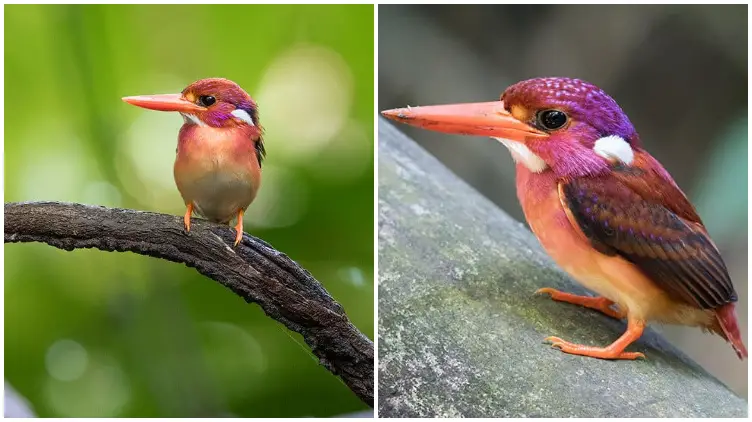
After more than a century since its initial documentation in 1890, a rare and elusive bird has finally been successfully photographed. Known as the South Philippine Dwarf Kingfisher, this mysterious avian species is found in the southern part of the Philippines. The bird remained a puzzle for over a hundred years since Prof. Joseph Beal Steere depicted it during his expedition to the Philippines. However, thanks to the determined efforts of Field Biologist/Conservationist Miguel David De Leon and his team of researchers from the Robert S. Kennedy Bird Conservancy, this timid bird’s breathtaking beauty has now been captured on camera, ready to be admired by people worldwide. Describing the challenges faced in obtaining these pictures as merely difficult would be an understatement, but the stunning photographs make it all worthwhile.
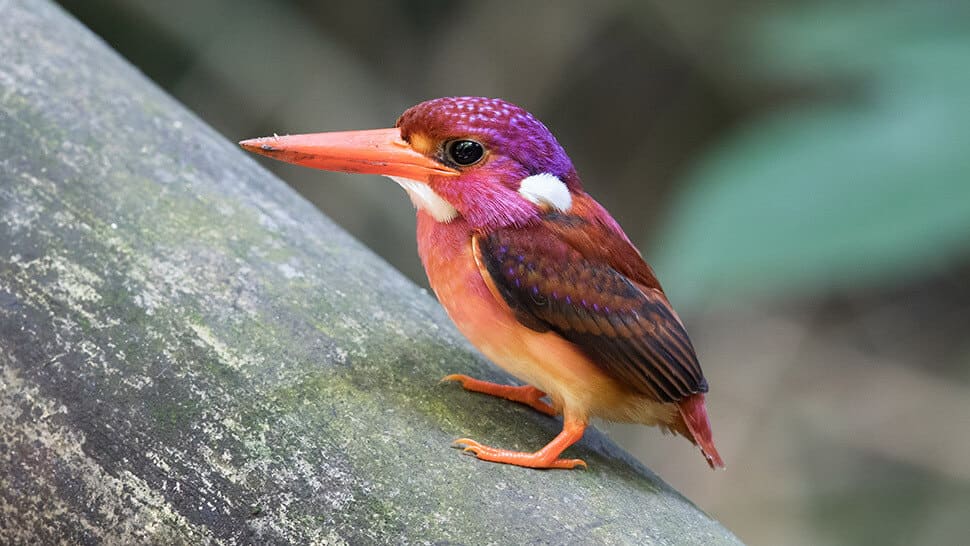 Image source: Miguel David De Leon
Image source: Miguel David De Leon
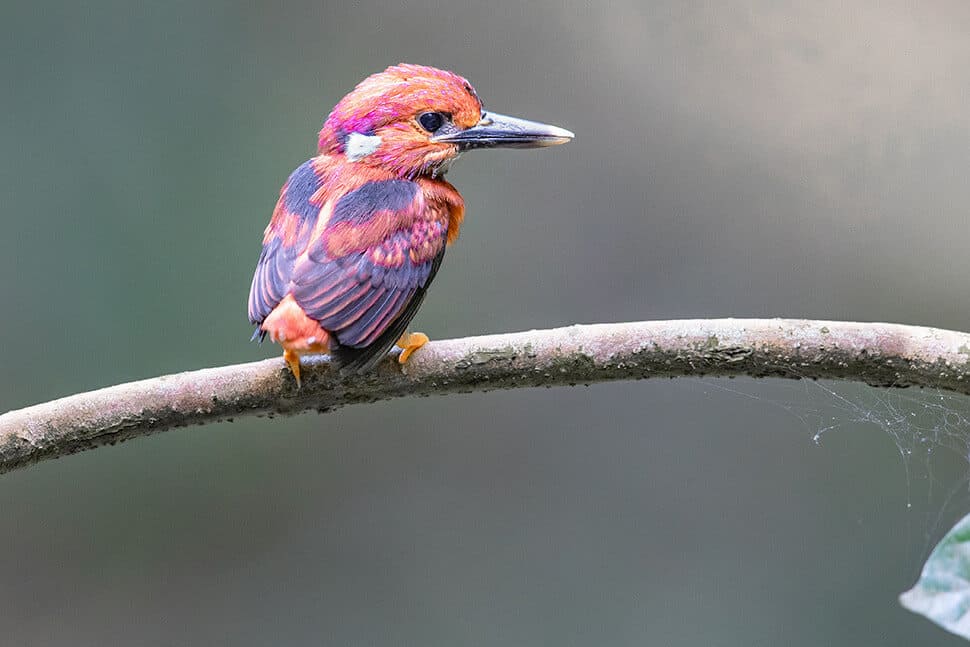 Image source: Miguel David De Leon
Image source: Miguel David De Leon
Take a look at this bird, it’s incredibly small. In fact, it holds the title of being the smallest Kingfisher species in the Philippines. What makes it even more extraordinary is its eye-catching plumage, adorned with shimmering lilac, orange, and bright blue spots. Its distinct features, such as the coral red beak, lilac-rufous upperparts, yellow-orange underparts, and dark blue back, easily set it apart from other birds in its habitat. Even its call is quite unique, described as a “high-pitched, insect-like, and almost inaudible zeeeep.” This charming creature thrives in untouched forests and regenerating woodlands found on the islands of Mindanao and Basilan.
 Image source: Miguel David De Leon
Image source: Miguel David De Leon
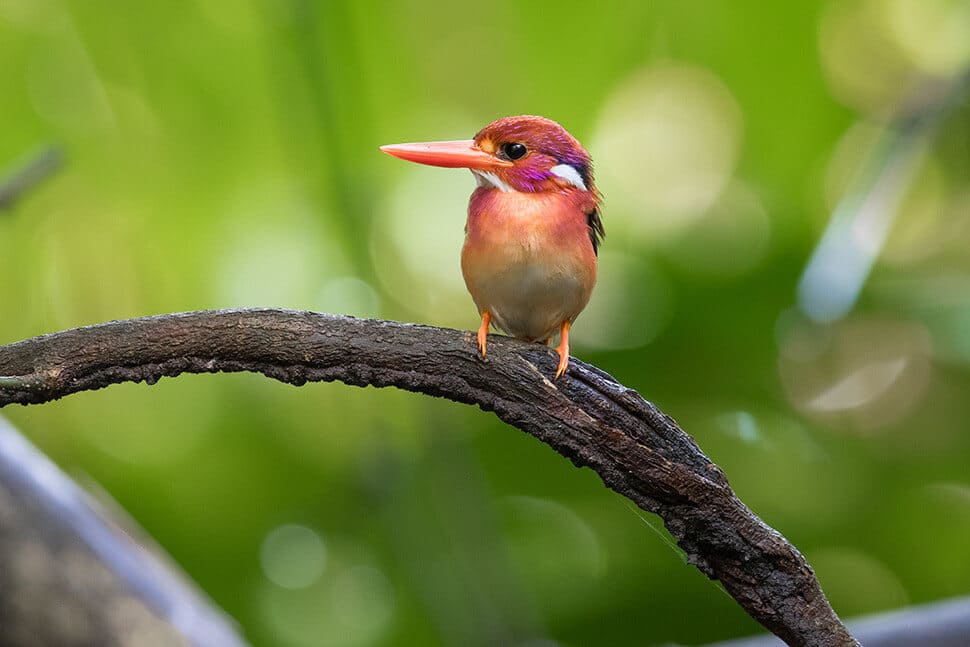 Image source: Miguel David De Leon
Image source: Miguel David De Leon
According to Miguel David De Leon, the director of the Robert S. Kennedy Bird Conservancy and a field biologist, their small organization comprises eight dedicated field workers and bird photographers who study and document birds and their environments. De Leon is confident that their efforts provide valuable insights that were previously undisclosed in the scientific community. Their ultimate mission is to safeguard ecosystems and the diverse species that call them home.
“We focus on poorly known birds and document their biology and ecology or how they interact with other organisms in their habitat,” De Leon adds.
After nearly ten years of dedicated work, De Leon and his colleagues have successfully captured visual documentation of one of the most extraordinary and difficult-to-find bird species in existence. Their primary goal was to record the nesting, feeding, and breeding behaviors of these birds in order to contribute to the conservation efforts aimed at protecting this remarkable species.
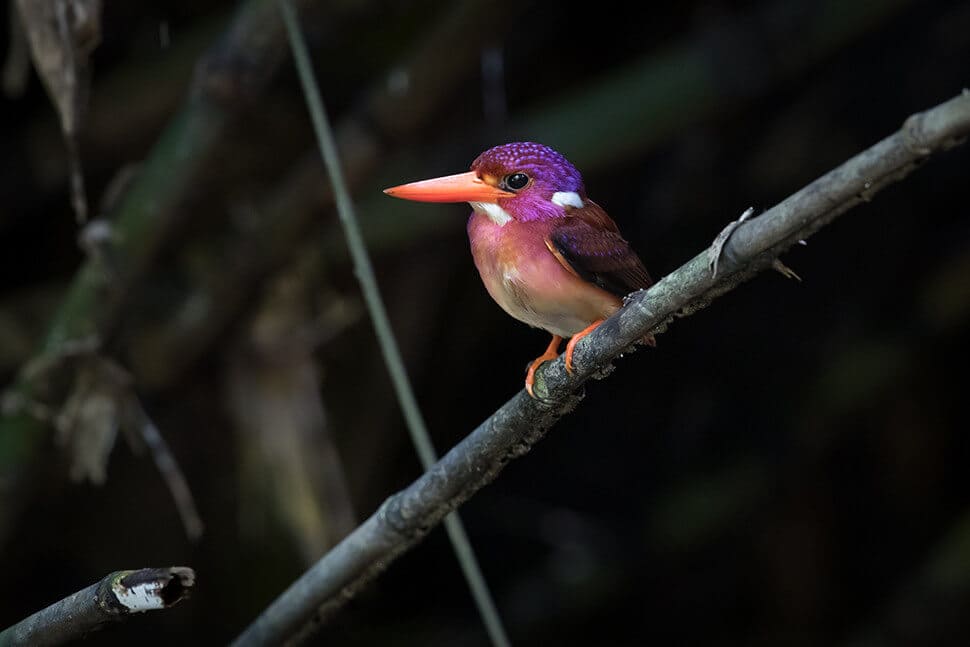 Image source: Miguel David De Leon
Image source: Miguel David De Leon
 Image source: Miguel David De Leon
Image source: Miguel David De Leon
Dwarf kingfishers have a unique nesting behavior, as they create homes in cavities like earth banks and termite nests known as termitaria. These tiny birds rely on a diet consisting of smaller creatures such as worms, lizards, insects, and more.
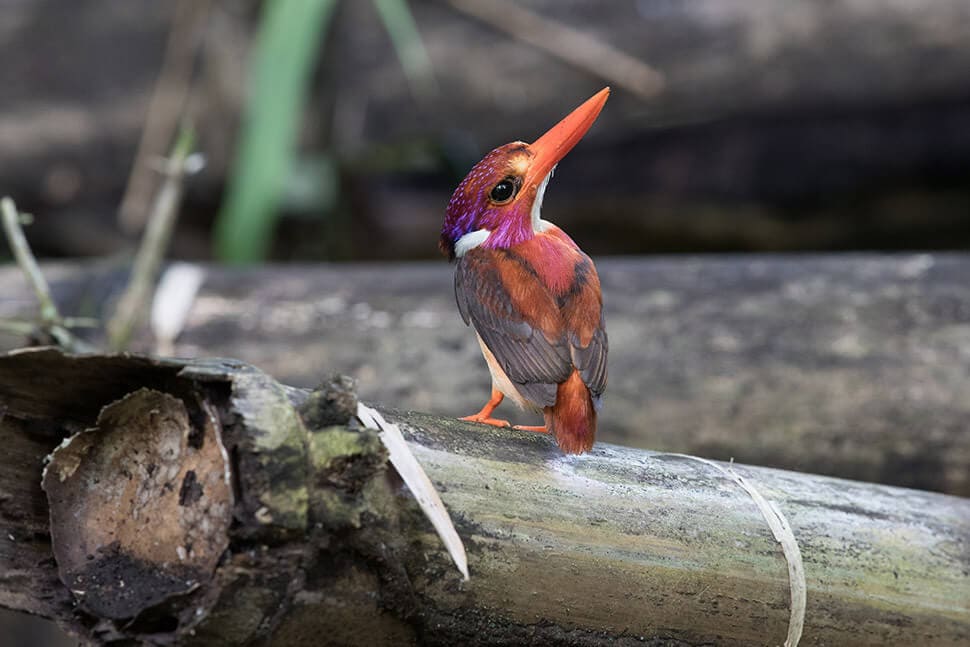 Image source: Miguel David De Leon
Image source: Miguel David De Leon
According to De Leon, the South Philippine Dwarf Kingfisher faces significant challenges to its survival, including habitat destruction, poaching, and the impacts of climate change. He emphasizes that conservation efforts extend beyond merely protecting forests and trees, recognizing the importance of addressing these threats to safeguard this unique bird species.
“The biggest threat to the decline or loss of our endemic and indigenous species is habitat loss. Hunting and trapping for food or the illegal pet trade are contributory factors as well. Culturally, recreational shooting of birds using airguns or slingshots puts further pressure on bird populations,” says De Leon.
 Image source: Miguel David De Leon
Image source: Miguel David De Leon
You can watch the live video of the South Philippine Dwarf Kingfisher here:
Xem bài viết này trên Instagram
ANIMALS
Amazing Video of Unseen Ocean Creatures in the Ningaloo Canyons

The Schmidt Ocean Institute recently explored the Ningaloo Canyons on the western coast of Australia using a robotic underwater vehicle called the ROV Sebastian. Check out the amazing video of what they discovered in the deep parts of the Indian Ocean.
More info: Youtube




ANIMALS
These Pics Are Art and the Artists Are Insects

Flying insects move so quickly that they are hard to follow, but new technology and some smart ideas have helped Spanish photographer Xavi Bou do just that. After spending 10 years focusing on birds in flight for his Ornithographies project, he turned his attention to insects.
For Entomographies, he uses high-speed video footage taken by Adrian Smith, an insect expert at North Carolina State University, to study and record how insects move. Bou then picks multiple frames and combines them into single images that show the fast movements of one or more insects through space and time.
With Smith’s help, Bou has captured the aerial tricks of wasps, the jumps of leafhoppers, and the fluttering of butterflies in amazing detail. He hopes that by doing this, he can make people more aware of the decline in important insect populations around the world.
1. Zebra longwing
This butterfly, which is common in many areas of the Americas, really fits its name. It can fly very high with just a few flaps of its large wings.
 Image source: nationalgeographic
Image source: nationalgeographic
2. Two-lined spittlebug
This insect, which comes from the eastern United States, is often seen as a pest because it likes to eat grass. Its springy back legs can make it jump into the air like a rocket.
 Image source: nationalgeographic
Image source: nationalgeographic
3. Yellow-collared scape moth
Unlike most moths, this North American species flies during the day. Its shiny blue-black wings sparkle in the sunlight.
 Image source: nationalgeographic
Image source: nationalgeographic
4. Ailanthus webworm moths
These tropical moths have spread farther north in the U.S. Because of their larval host, the invasive tree of heaven, they are now one of the most common backyard moths in the country.
 Image source: nationalgeographic
Image source: nationalgeographic
5. Common stonefly
Mostly found in eastern North America, this insect starts its life as an underwater nymph in forested streams or rivers. Then it leaves the water, sheds its skin, and becomes an adult with wings.
 Image source: nationalgeographic
Image source: nationalgeographic
6. Green lacewings
Eighty-seven species of this insect have been found in the U.S. and Canada. Since they eat a lot of unwanted plant pests like aphids and mites, they are often used to naturally control these pests.
 Image source: nationalgeographic
Image source: nationalgeographic
7. Grapevine beetle
This insect, fittingly named, eats the leaves and fruit of grapevines, both wild and farmed, but it doesn’t do much damage to the plants. As a type of scarab beetle, it often flies in a curved path.
 Image source: nationalgeographic
Image source: nationalgeographic
8. Oak treehopper and green treehopper
Treehoppers are known for their uniquely shaped pronotum, the part behind their head, which often looks like plant parts to hide from predators. They can jump well thanks to special muscles.
 Image source: nationalgeographic
Image source: nationalgeographic
9. Banded orange
This brightly colored butterfly can be found from Mexico to Brazil. Before mating season, male butterflies look for mineral salts, sometimes even drinking salty fluids from the skin, eyes, and nostrils of other animals.
 Image source: nationalgeographic
Image source: nationalgeographic
10. Sapho longwing
Longwings can live for 6 to 7 months, longer than most butterflies. This type, found from Mexico to Ecuador, has shiny blue wings, which is why it’s also called the Sapphire longwing.
 Image source: nationalgeographic
Image source: nationalgeographic
ANIMALS
Eagle and Fox in an Epic Midair Battle Over a Rabbit, Were Captured by a Photographer

Wildlife photography often depends on the perfect combination of good timing and the right place.
That’s exactly what happened when Kevin Ebi, an experienced wildlife photographer, captured an incredible battle between a bald eagle and a red fox, both competing for a rabbit meal.
In a detailed blog post, Ebi shares the fascinating series of events that unfolded while he was photographing foxes in San Juan Island National Historical Park, located in Washington state.
Ebi noticed a lively group of eight fox kits as they began their hunting lessons. Suddenly, they spotted a rabbit, and a thrilling chase ensued. Eventually, one of the foxes emerged as the winner, proudly carrying the rabbit across the field.
 Image source: Kevin Ebi
Image source: Kevin Ebi
Ebi shares what happened at that moment: “As I followed the fox with my camera, a sudden bald eagle cry caught my attention. It was swiftly approaching, clearly aiming for the rabbit. I quickly focused on the fox, anticipating a quick turnover of events.”
To Ebi’s astonishment, instead of a quick surrender, the situation turned into a intense fight in the air.
The eagle used its power to lift the fox and rabbit high up in the sky. Even while airborne, the fox attempted to break free by swinging back and forth.
 Image source: Kevin Ebi
Image source: Kevin Ebi
 Image source: Kevin Ebi
Image source: Kevin Ebi
 Image source: Kevin Ebi
Image source: Kevin Ebi
In the end, the eagle moved the rabbit to its other claw, causing the fox to let go. The intense battle came to an end in less than 10 seconds.
 Image source: Kevin Ebi
Image source: Kevin Ebi
For those worried about the fox’s well-being after the fight, Ebi reassures that it was not injured. The fox swiftly bounced back from the encounter and resumed its playful behavior with the other young foxes, showing no visible wounds from the aerial clash.
 Image source: Kevin Ebi
Image source: Kevin Ebi
 Image source: Kevin Ebi
Image source: Kevin Ebi
 Image source: Kevin Ebi
Image source: Kevin Ebi
 Image source: Kevin Ebi
Image source: Kevin Ebi
-

 GARDEN10 tháng ago
GARDEN10 tháng ago4 Easiest Ways to Get Free Plants
-

 ANIMALS10 tháng ago
ANIMALS10 tháng agoBritish Angler Caught Huge 67-Pound Goldfish in the World
-

 FUNNY10 tháng ago
FUNNY10 tháng ago30 Funny and Perplexing Photos That Make You Laugh All Day
-

 GARDEN9 tháng ago
GARDEN9 tháng ago30 Shimmering Side Yard Landscape Ideas
-

 FUNNY10 tháng ago
FUNNY10 tháng ago30 Weirdest Things That People Came Across On The Subway
-

 DIY & CRAFT10 tháng ago
DIY & CRAFT10 tháng ago19 Easy and Creative DIY Ideas to Enhance Front Yard
-

 ANIMALS10 tháng ago
ANIMALS10 tháng agoKindhearted Driver Rescues Skinny Dog Hiding Near Highway Thanks to His Eagle Eye
-

 FUNNY10 tháng ago
FUNNY10 tháng ago22 Design Fails That Will Make You Laugh Out Loud





